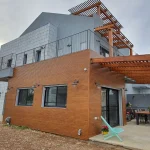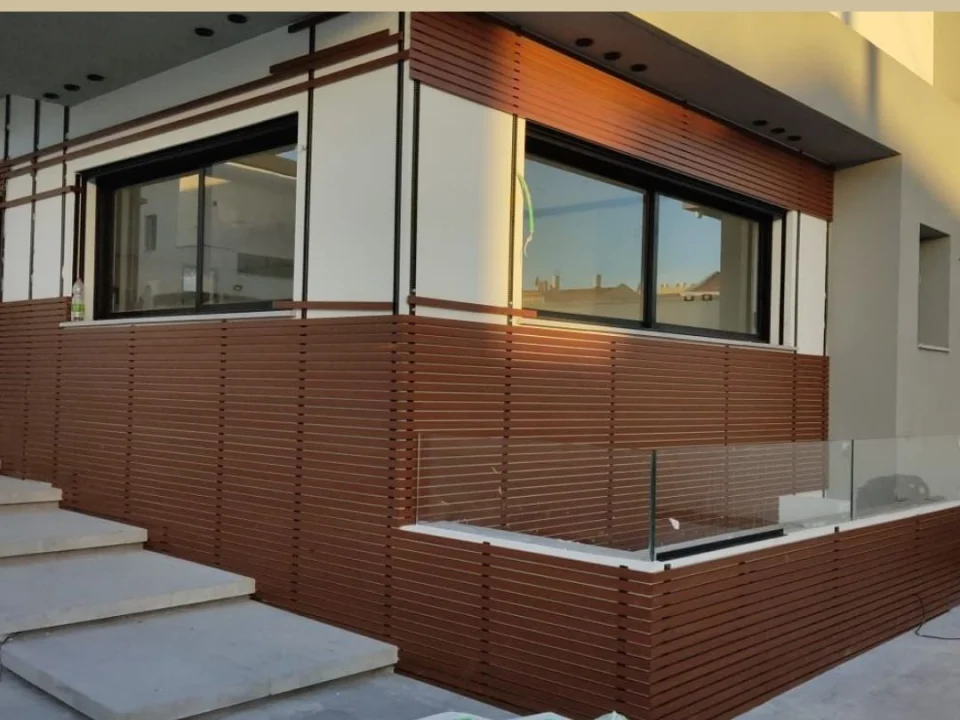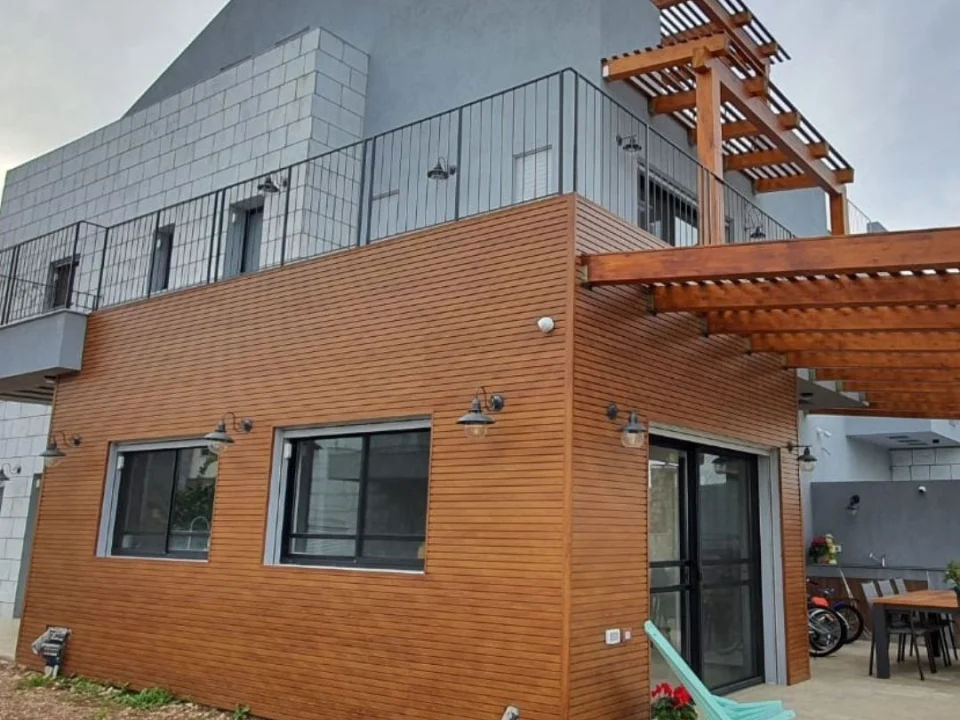
Exterior Lightweight Cladding by GTO Aluminum

Types of Cladding – A Guide by GTO Aluminum
Internal cladding changes the look and performance of indoor walls. It covers the wall with a new layer. That layer protects. It looks good. It can hide damage. It can make a room feel new.
This guide explains what internal cladding is. It shows how it attaches to walls. It explains why lightweight cladding like aluminum is often the best choice. It also shows why GTO Aluminum is a top option for interior work.
What is internal cladding?
Internal cladding means fixing panels or boards to the inside face of a wall. It does not carry structural loads. It’s a skin. This skin gives style and protection. It can be used in homes, offices, retail, hotels, and more.
You can get plain panels. Or textured panels. You can choose wood-look panels, metal panels, or modern smooth finishes. One popular choice is wall metal panels because they are strong and neat.
Why choose internal cladding?
There are simple reasons. First, it hides problems. Cracks, stains, or old paint, all covered. Second, it upgrades the look fast. A worn wall becomes a design feature in hours. Third, it adds performance. Some cladding improves fire resistance, moisture control, or acoustic comfort.
For designers, it is a creative tool.
For contractors, it saves time.
For distributors, it is an easy product to sell.
Lightweight cladding, why it matters
Heavy panels need more labor. They need lifts and more hands. Lightweight cladding changes that.
Aluminum panels are strong and light. They are easier to handle on-site. They cut installation time. They reduce worker fatigue and risk.
If you want fast installs, choose a lightweight system. It’s flexible for tight spaces and high ceilings too.
Types of internal cladding systems
There are a few common systems. Each has its place.
- Fixed panels – panels screwed or glued to the substrate.
- Clip-on systems – panels click or snap on to rails.
- Slide-in (tongue and groove) – panels slide and lock together.
- Curtain-like systems – for complex facades or floating walls.
Attachment is a key detail.
Good cladding attachment systems stop movement, keep waterproofing, and allow thermal expansion. The right fixings also make panels easy to remove later if needed.
Vertical cladding vs horizontal cladding
Orientation changes the look and the install method. Vertical cladding gives height and a sleek style. It suits lobbies and tall walls. Horizontal cladding feels wider and more relaxed. It suits lounges and reception areas.
Both work with modern cladding. Pick the orientation based on space and the design mood you want.
Modern cladding finishes – wood grain aluminum and more
Today you can have a natural look with metal. Wood grain aluminum gives the warmth of timber. But it keeps the strength and low maintenance of aluminum.
You can also choose matte greys, metallics, or custom colors. This is great for brand spaces, showrooms, and high-end interiors.
Cladding for interior walls – practical points
Think about these basics before you pick materials:
- Substrate condition. The wall behind must be stable.
- Moisture control. Use moisture-resistant panels in damp areas.
- Fire rules. Check local fire codes for interior cladding materials.
- Acoustics. Some systems improve sound control.
- Maintenance. Pick low-maintenance finishes for busy spaces.
Good planning prevents surprises on site. Always check the wall and the attachment method.
Cladding attachment, simple and safe
Attachment may be anchors, rails, or clips. It must allow movement from temperature changes. It must be strong enough for the panel weight. And it must keep a neat finish.
Many modern systems use rails fixed to the wall, and panels that slide or click onto those rails. This hides fixings and gives a clean look.
Commercial cladding systems – what pros want
For commercial projects, speed and repeatability matter. Contractors want systems that are fast and reliable. Designers want variety and clean joints. Owners want durability and low upkeep.
Commercial cladding systems should meet performance standards. They must be tested for fire, water, and movement. Choose trusted systems from established suppliers.
Why GTO Aluminum for internal cladding
GTO Aluminum already offers systems built for both interior and exterior use. Their panels come in wood tones and many modern finishes.
GTO’s Click System snaps panels on rails. It hides screws. It’s quick. It’s great for DIY and for fast site installs.
Their Universal System slides panels together for a sealed finish. It works well where a smooth, gap-free finish is needed.
GTO panels are lightweight. They ship easy. They cut on site. They fit tight spaces.
For internal cladding, that means less labor and fewer headaches.
Designers like the wood-look aluminum options. They get warm textures with no decay, no termites, and no painting.
How GTO helps installers and distributors
GTO focuses on simple installation.
Profiles are made to fit. Everything snaps, slides, or clicks. This reduces mistakes on site.
For distributors, GTO is easy to explain and show. Samples are small and lightweight. Clients can see finishes in person. That sells projects faster.
Use cases – where internal cladding shines
- Reception walls – make a strong first impression.
- Hotel lobbies – durable beauty with a refined look.
- Retail stores – brand color and texture control.
- Kitchens and wet areas – water-resistant options.
- Offices and meeting rooms – acoustic-friendly panels.
- Restaurants – durable finishes that clean easily.
In every case, internal cladding changes both look and function.
Quick installer checklist
- Inspect wall and remove loose material.
- Measure and mark rail positions.
- Fix rails straight and level.
- Cut panels to fit.
- Slide or click panels into place.
- Finish edges with trims and column covers.
- Check for movement allowances and gaps.
Simple steps. Clean results.
Final thought:
Internal cladding is a simple tool for big impact. It hides issues. It adds performance. It refreshes spaces quickly.
Lightweight solutions like aluminum make the job easier. Attachment systems matter. Choose the right method for the job.
If you want a system that’s fast, flexible, and friendly to both DIY and pro installers, GTO Aluminum is a solid choice. They offer modern cladding, wood-look finishes, click and universal systems, and products made to install fast and look great.
Faqs
I want to upgrade my walls, but I’m scared it’ll be a long, messy job. Is internal cladding really easy to install?
You’re not alone – that thought hits almost everyone before starting. No one wants their home or office turned into a construction zone. The good thing is, internal cladding isn’t like old-school renovation. It’s clean, quick, and smart. Lightweight cladding systems, especially aluminum ones, don’t need heavy tools or cement work. Most panels just click or slide in place. No noise, no dust, no chaos – and in a day or two, the wall looks brand new. That’s the beauty of modern design: it gives you a big change without big stress.
I love the look of wood, but I’m worried it won’t last indoors with moisture and cleaning. Can I still get that warm wood vibe?”
Yes – and without the headache that real wood brings. We all love that cozy, natural feeling wood gives. But the truth is, real wood stains, warps, and hates moisture. That’s why wood grain aluminum panels are such a win.They look just like wood – rich tone, fine texture, but they’re actually aluminum underneath. So, no mold, no warping, no termites, and no repainting every year. You get the warmth of wood and the strength of metal in one design. It’s like having beauty and peace of mind at the same time.
I want something modern, but I don’t want it to feel cold or too industrial. Can aluminum cladding still feel warm and stylish?”
That’s a real concern, and a fair one. Many people think metal means shiny or lifeless. But not anymore. Modern cladding for interior walls has changed completely. Aluminum comes in soft matte tones, warm wood patterns, and smooth textures. It can look luxurious, cozy, or minimal, whatever your space needs. It’s not just metal, it’s mood. With GTO Aluminum, you can play with colors and finishes that feel welcoming. You can design warmth, style, and comfort, all in one wall. So yes, you can go modern without losing that emotional warmth you want your space to have.





